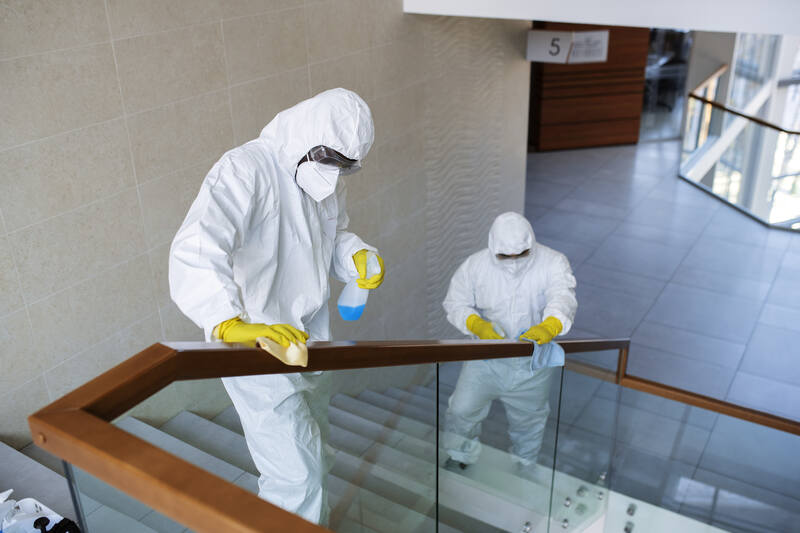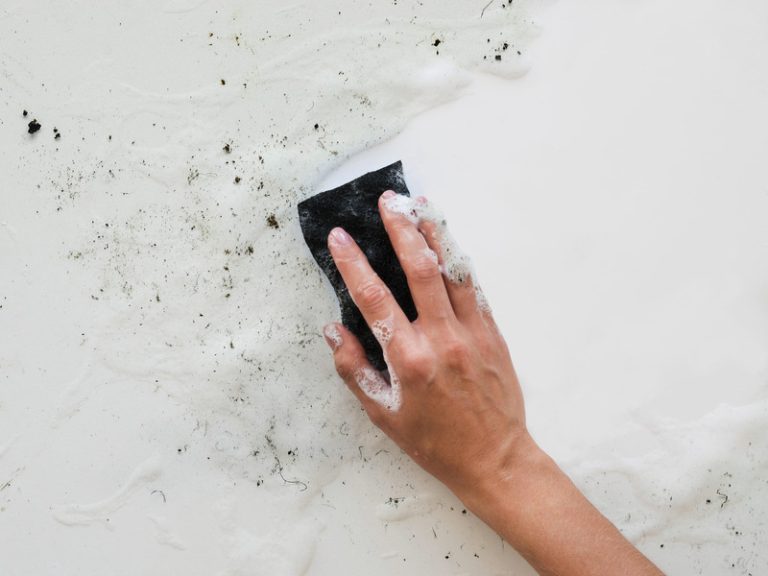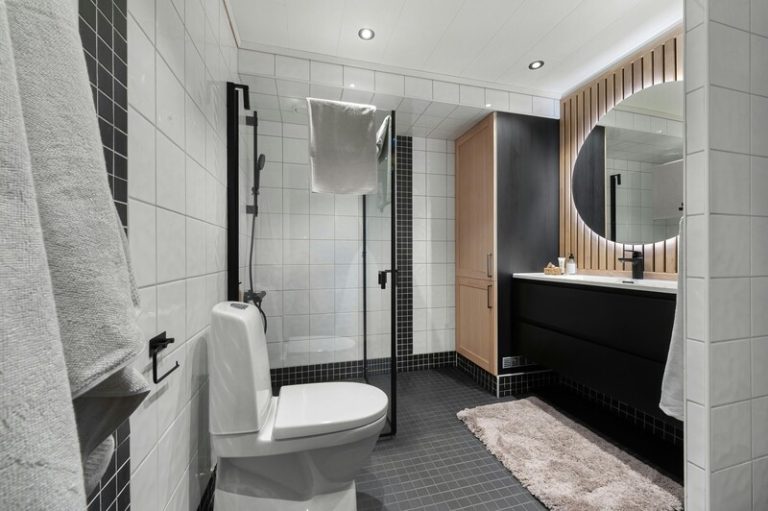Proper disinfecting and cleaning hospitals on a regular basis is essential to maintain a safe and healthy environment for patients and staff.
In this article, we will explore the importance of healthcare cleaning, the importance of disinfection in hospitals, types of disinfectants used in hospitals, and what cleaning products do hospitals use.
From chemical disinfectants to UV light systems, we will delve into the best practices for hospital cleaning and disinfection to ensure the prevention of infections and the overall well-being of all those within the healthcare setting.
The Importance of Cleaning Hospitals
Proper cleaning and disinfection in hospitals are essential to maintain high hygiene standards and prevent the spread of infections among patients and staff.
Moreover, proper hospital cleaning helps healthcare providers adhere to cleanliness standards set by regulatory bodies such as the National Institute for Health and Care Excellence (NICE) and the NHS, ensuring patient safety and minimising the risk of healthcare-associated infections.
By implementing strict protocols for cleaning and disinfecting hospital facilities, healthcare providers can significantly reduce the risk of infections, which is crucial in a sensitive environment like hospitals.
Not only does proper cleaning and disinfection protect patients from acquiring new infections, but it also safeguards the health and well-being of the dedicated healthcare professionals who are working tirelessly to care for those in need.
Inadequate cleaning in healthcare settings can lead to the proliferation of harmful bacteria such as MRSA and C.difficile, posing severe infection risks to patients.
These infections are particularly dangerous in hospitals, where patients are already vulnerable due to illness or surgery. MRSA (Methicillin-resistant Staphylococcus aureus) and C.difficile (Clostridium difficile) thrive in unclean environments, increasing the likelihood of transmission among patients and healthcare workers.
Beyond the health implications, the financial fallout from these infections is significant. Increased infection rates lead to longer hospital stays, additional treatments, and higher healthcare costs. Not only does this strain healthcare resources, but it also places a burden on patients and their families.
The Importance of Disinfection in Hospitals
Within the healthcare industry, the use of effective disinfectants is essential in maintaining high hygiene standards as recommended by regulatory bodies such as the National Institute for Health and Care Excellence (NICE) and the Care Quality Commission (CQC).
a. What is the Purpose of Disinfectants in Hospitals?
The primary purpose of disinfectants in hospitals is to eliminate pathogens and prevent the spread of infections, ensuring a safe environment for patients and healthcare providers.
Healthcare providers play a crucial role in upholding strict hygiene standards by regularly applying disinfectants to surfaces, medical equipment, and high-touch areas within healthcare facilities. This practice not only safeguards vulnerable patients from acquiring hospital-acquired infections but also protects the dedicated staff working tirelessly to provide care.
By diligently following disinfection protocols, healthcare workers demonstrate their commitment to maintaining a clean and safe environment, ultimately contributing to improved patient outcomes and overall public health.
b. How Do Disinfectants Work to Prevent the Spread of Infections?
Disinfectants work to prevent the spread of infections by chemically destroying or deactivating bacteria, viruses, and other harmful microorganisms such as MRSA and C.difficile.
Various disinfectants exert their antimicrobial effects through different mechanisms. For instance, bleach disrupts the cell walls of microorganisms, leading to their destruction. Alcohol-based disinfectants, on the other hand, denature proteins within the pathogens, rendering them unable to function.
When applied correctly, disinfectants help maintain a clean environment, particularly crucial in hospital settings where the risk of infection transmission is high. By targeting these harmful pathogens, disinfectants play a vital role in reducing the likelihood of nosocomial infections and ensuring patient safety. Proper disinfection protocols are essential for preventing the spread of diseases among vulnerable individuals.
Types of Disinfectants and Cleaning Products Used in Hospitals
The healthcare industry uses a variety of disinfectants and cleaning products to ensure comprehensive hygiene and infection control in the hospital environment, among which are:
a. Chemical Disinfectants
Chemical disinfectants are widely used in the healthcare industry to eradicate a wide spectrum of bacteria and other pathogens, ensuring a sterile hospital environment.
These disinfectants come in various forms, including liquids, sprays, wipes, and gels, each with their unique composition and method of action. Common components of chemical disinfectants include chlorine compounds, quaternary ammonium compounds, alcohols, hydrogen peroxide, and phenolics.
These agents work by disrupting the cell membranes of bacteria and viruses, effectively destroying them. Different types of disinfectants are effective against specific pathogens; for instance, alcohol-based disinfectants are excellent for killing enveloped viruses but may not be as effective against bacterial spores.
b. UV Light Disinfection
UV light disinfection is an advanced method used in the healthcare industry to reduce infections by destroying the DNA of harmful microorganisms.
UV light disinfection works by using ultraviolet (UV) rays to penetrate the cells of microorganisms, disrupting their DNA structure and preventing their replication.
This technology is highly effective in killing bacteria, viruses, and other pathogens that can cause infections in healthcare settings.
One of the key advantages of UV light disinfection is its ability to reach areas that may be missed by traditional cleaning methods, such as nooks and crannies where bacteria can hide.
c. Steam Cleaning
Steam cleaning is an effective method used in healthcare settings to sanitize surfaces and equipment.
By using steam cleaning, hospitals can effectively eliminate bacteria, viruses, and other harmful microorganisms that pose a threat to patient health.
The high-temperature steam not only sanitizes the surfaces but also penetrates deep into crevices, ensuring a thorough cleaning process.
One of the key advantages of steam cleaning is that it does not require the use of harsh chemicals, making it a safe and eco-friendly cleaning option for healthcare facilities.
d. Disposable Wipes
Disposable wipes are convenient and effective tools used by healthcare providers to quickly clean and disinfect surfaces, reducing the risk of infections.
In hospital settings, there are various types of disposable wipes available to cater to different needs. From alcohol-based wipes for high-level disinfection to bleach-based wipes for surfaces prone to contamination, these wipes play a crucial role in infection control.
The ease of use of disposable wipes makes them a popular choice among healthcare providers. They offer a quick and efficient solution for cleaning frequently touched surfaces, such as doorknobs, bed rails, and medical equipment.
e. Automated Disinfection Systems
Automated disinfection systems represent a cutting-edge technology in the healthcare industry, offering efficient and consistent disinfection solutions.
These innovative systems utilise advanced technologies like ultraviolet light, hydrogen peroxide vapour, or ozone to achieve thorough disinfection of surfaces and equipment, helping to reduce the risk of healthcare-associated infections.
Plus their effectiveness, automated disinfection systems save valuable time and resources by streamlining the disinfection process and ensuring maximum coverage.
f. Laundry Detergents and Sanitizers
Laundry detergents and sanitisers are essential in hospital cleaning routines to ensure that linens and uniforms are free from pathogens.
These cleaning products play a crucial role in maintaining a hygienic environment within healthcare facilities. By effectively eliminating bacteria, viruses, and other harmful microorganisms present in fabrics, laundry detergents and sanitisers help prevent the spread of infections among patients, staff, and visitors.
Proper use of these products also contributes to reducing the risk of healthcare-associated infections, promoting overall patient safety and well-being.
g. Personal Protective Equipment (PPE)
Personal Protective Equipment (PPE) is crucial for healthcare providers to protect themselves and prevent the spread of infections within hospitals.
There are different types of PPE used in healthcare settings, including gloves, masks, gowns, and goggles. Gloves are essential for protecting hands from contamination, while masks help prevent the inhalation of harmful particles. Gowns provide a barrier against bodily fluids, and goggles protect the eyes from splashes.
Properly utilising PPE is vital in minimising the risk of transmission of infectious diseases between healthcare workers and patients, ensuring a safe healthcare environment for everyone involved.
Best Practices for Disinfection and Cleaning Hospitals
The implementation of disinfection and cleaning hospital practices is essential to help ensure that hospitals provide a clean and safe environment for patients and staff. Here’s the further explanation
a. Guidelines for Safe and Effective Hospital Cleaning
Cleaning hospital activities and their disinfection require proper guidelines to ensure high standards of hygiene and compliance with regulations set by the Care Quality Commission (CQC).
These guidelines outline specific protocols and procedures that must be followed diligently to maintain a clean and safe environment for patients, staff, and visitors. Tasks such as disinfecting high-touch surfaces, handling infectious waste properly, and using appropriate cleaning agents are crucial in preventing the spread of infections within healthcare facilities.
Strict adherence to these guidelines not only safeguards the health and well-being of individuals but also plays a critical role in upholding the reputation of the hospital and fostering trust in the community.
b. How Often Should Hospitals be Cleaned and Disinfected?
Disinfecting and cleaning hospital activities should be carried out regularly, with specific frequencies depending on the area and standards set by healthcare providers and regulatory bodies.
In critical areas like operating theatres and intensive therapy units, cleaning and disinfection should occur multiple times a day to prevent the spread of infections and ensure a sterile environment. High-touch surfaces such as door handles, handrails, and medical equipment should be cleaned and disinfected hourly to minimise cross-contamination risks.
Healthcare providers play a crucial role in upholding these cleaning and disinfection practices. They are responsible for following established protocols, using proper cleaning agents, and ensuring compliance with hygiene guidelines to safeguard the well-being of patients and staff.
c. Key Steps in Disinfection and Cleaning Hospitals
The key steps in disinfection and cleaning hospital involve thorough cleaning, application of disinfectants, and frequent monitoring to ensure compliance with hygiene standards.
Thorough cleaning is the foundation of effective hospital hygiene, as it removes dirt, debris, and microorganisms from surfaces. This initial step sets the stage for successful disinfection by creating a clean slate for the application of disinfectants.
Purposely chosen disinfectants play a crucial role in killing harmful pathogens and preventing the spread of infections within the healthcare environment. Regular monitoring and auditing of cleaning practices are essential to uphold high standards of cleanliness and identify areas that may need improvement to ensure a safe and healthy hospital setting.
Now, we have come to the end of this article about cleaning hospitals. From the explanation above, it can be understood that this activity is not only essential and complex but must also be carried out regularly and precisely according to established procedures.
Given the critical nature of hospital cleaning, it is a task that requires expertise and must meet the highest standards. Ensuring a sterile and hygienic environment is paramount for the safety of patients, staff, and visitors.
For this reason, entrust your hospital cleaning needs to the professionals at TEKA Cleaning. Our specialised cleaning services are designed to meet the stringent requirements of healthcare facilities. Our team is trained to adhere to the highest industry standards, using advanced equipment and techniques to ensure your hospital remains a safe and clean environment.
Don’t wait! Trust the professionals at TEKA Cleaning for your hospital’s specialised cleaning needs. Contact us today on 01233 751 544 to schedule a service that guarantees the highest levels of cleanliness and hygiene for your medical facility.
Read also:











